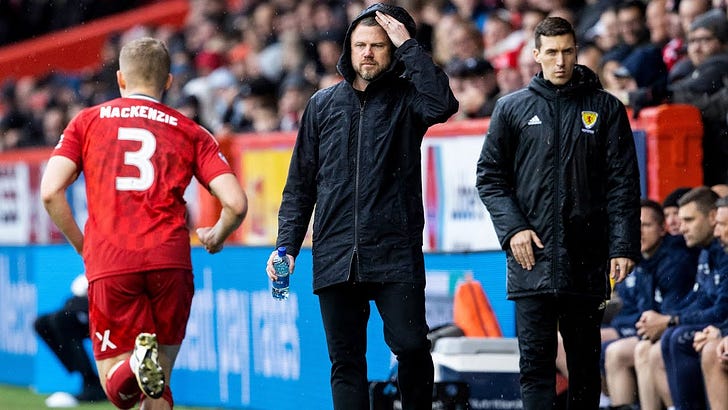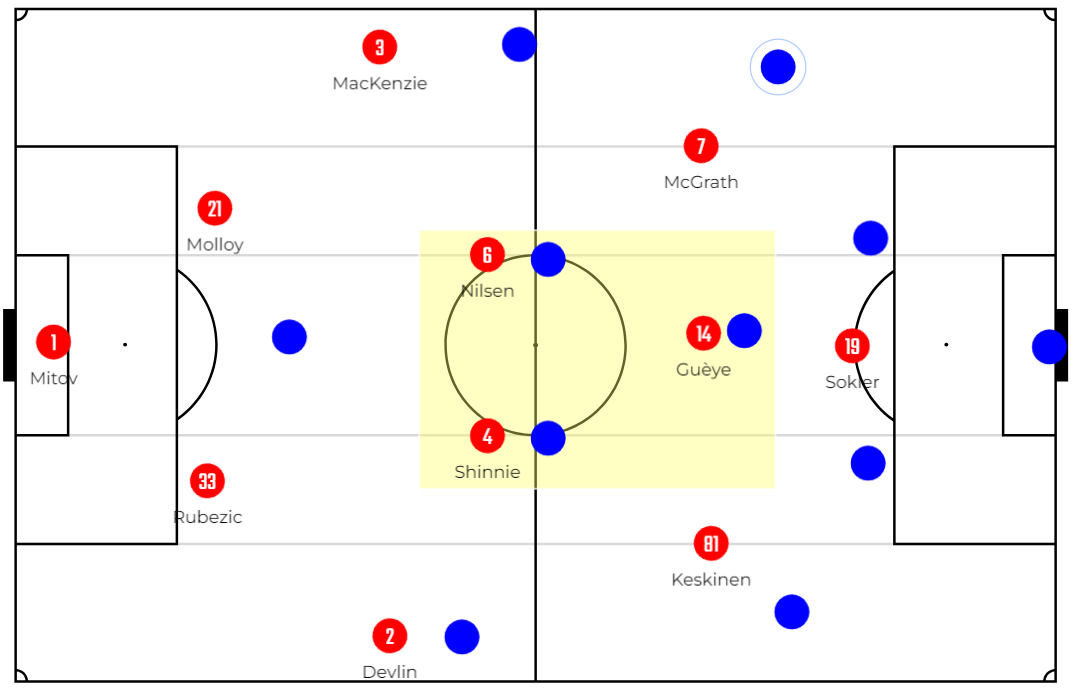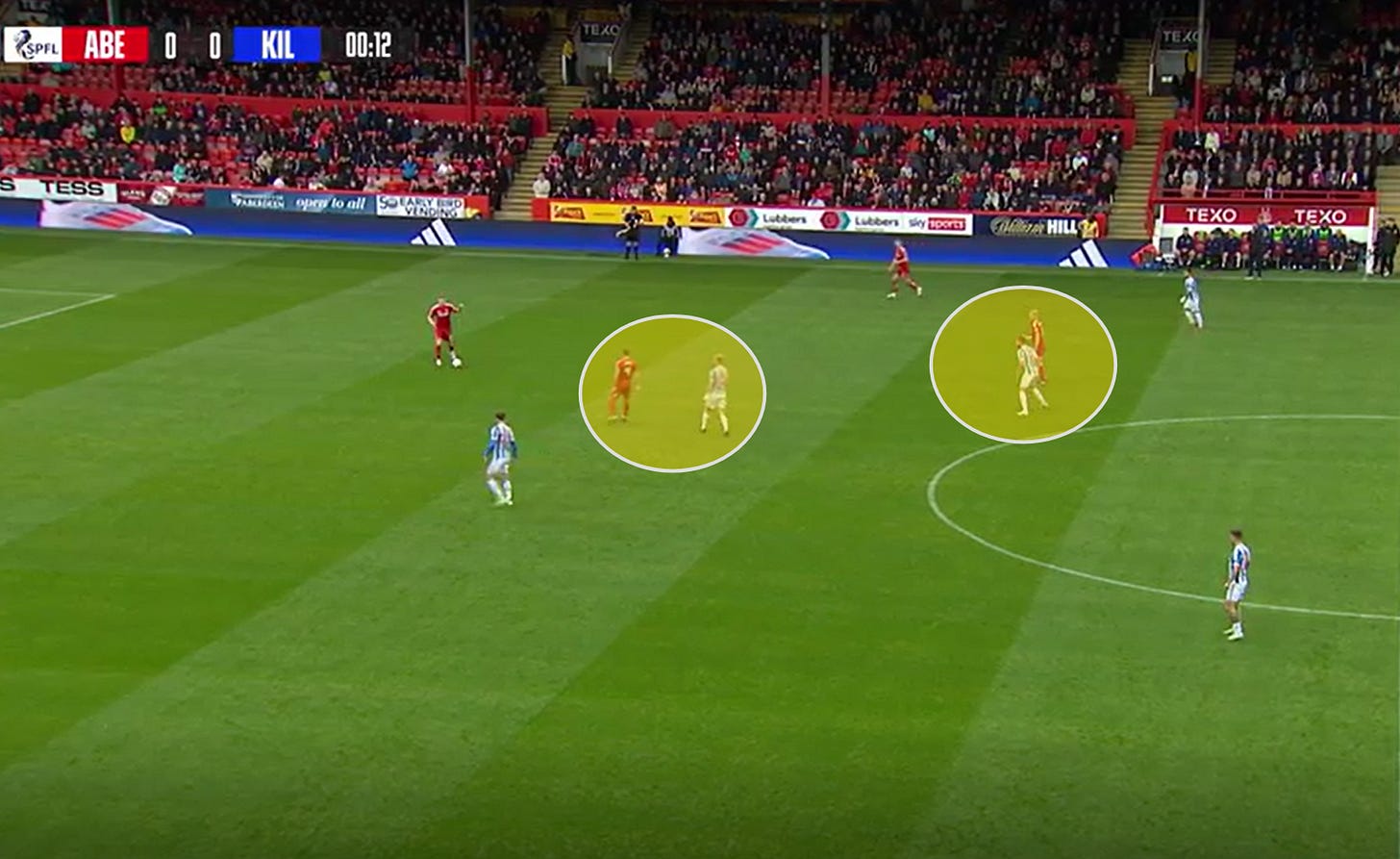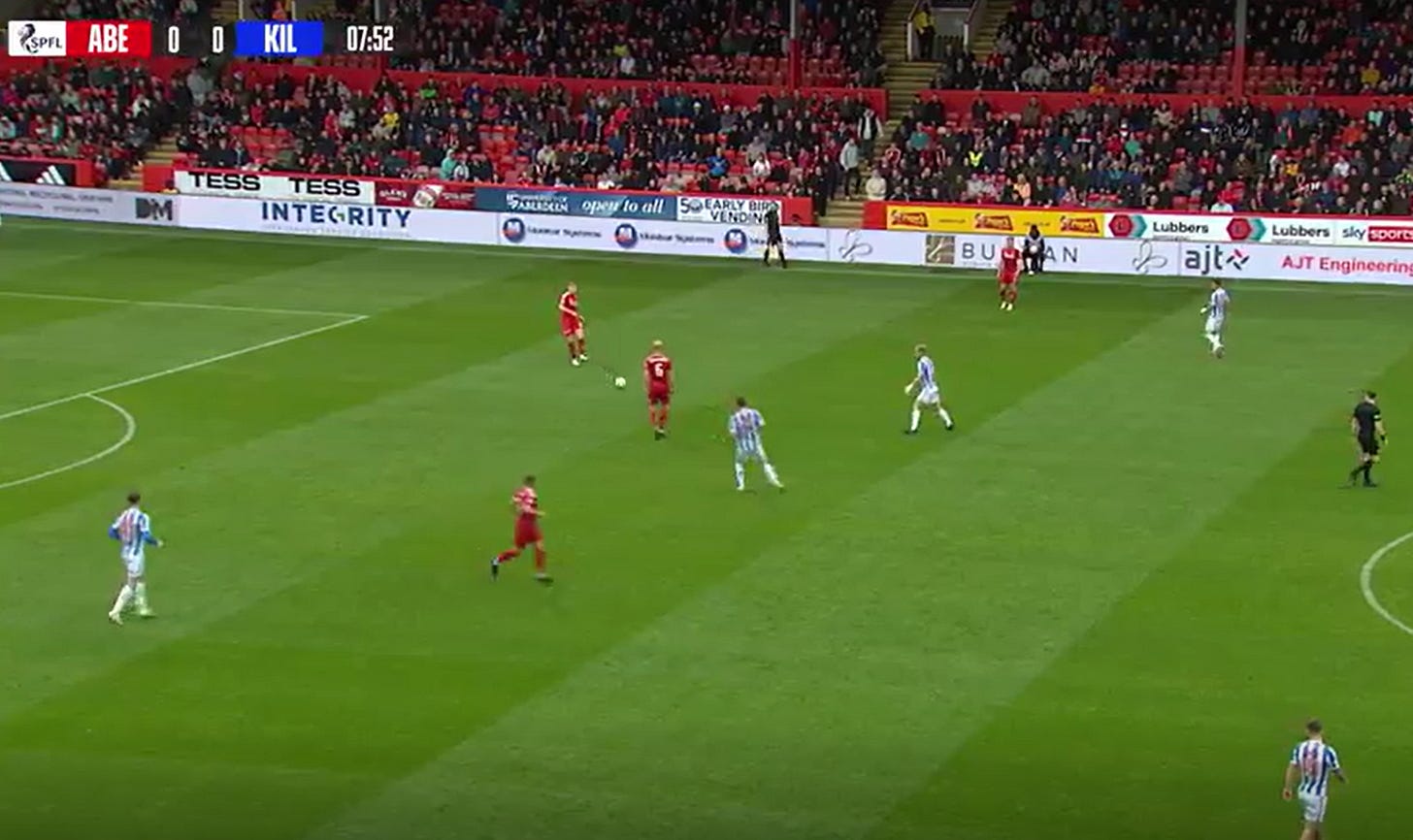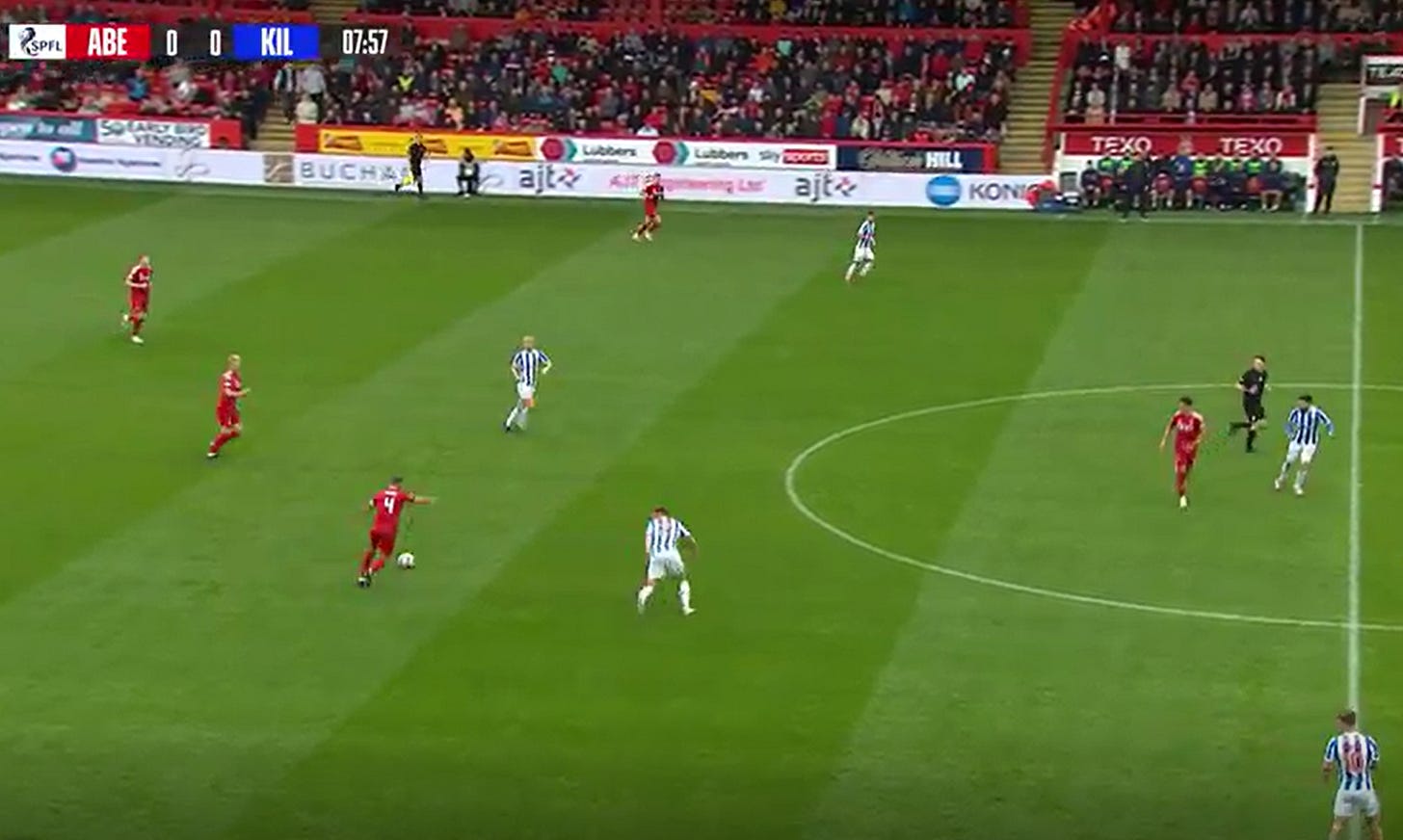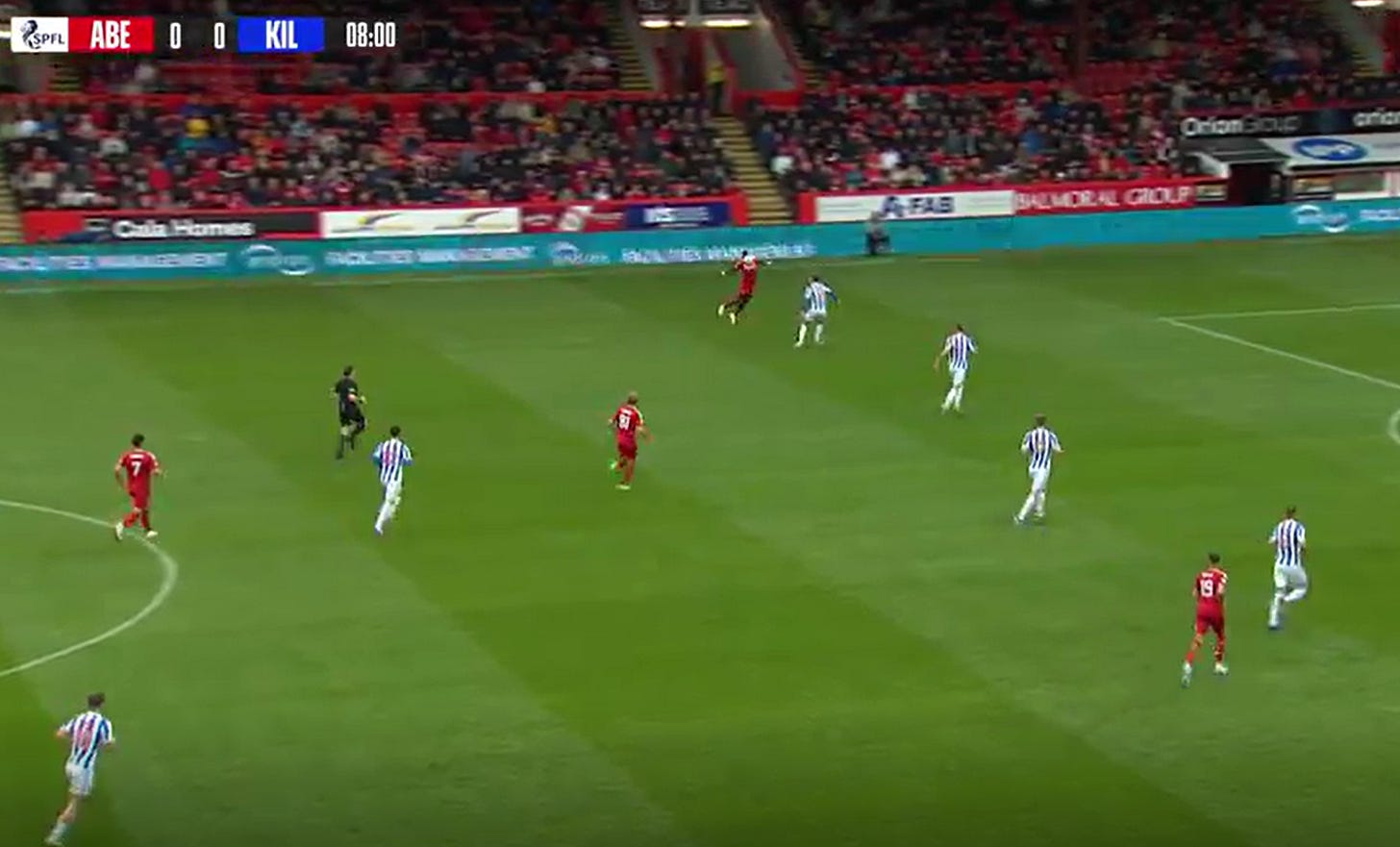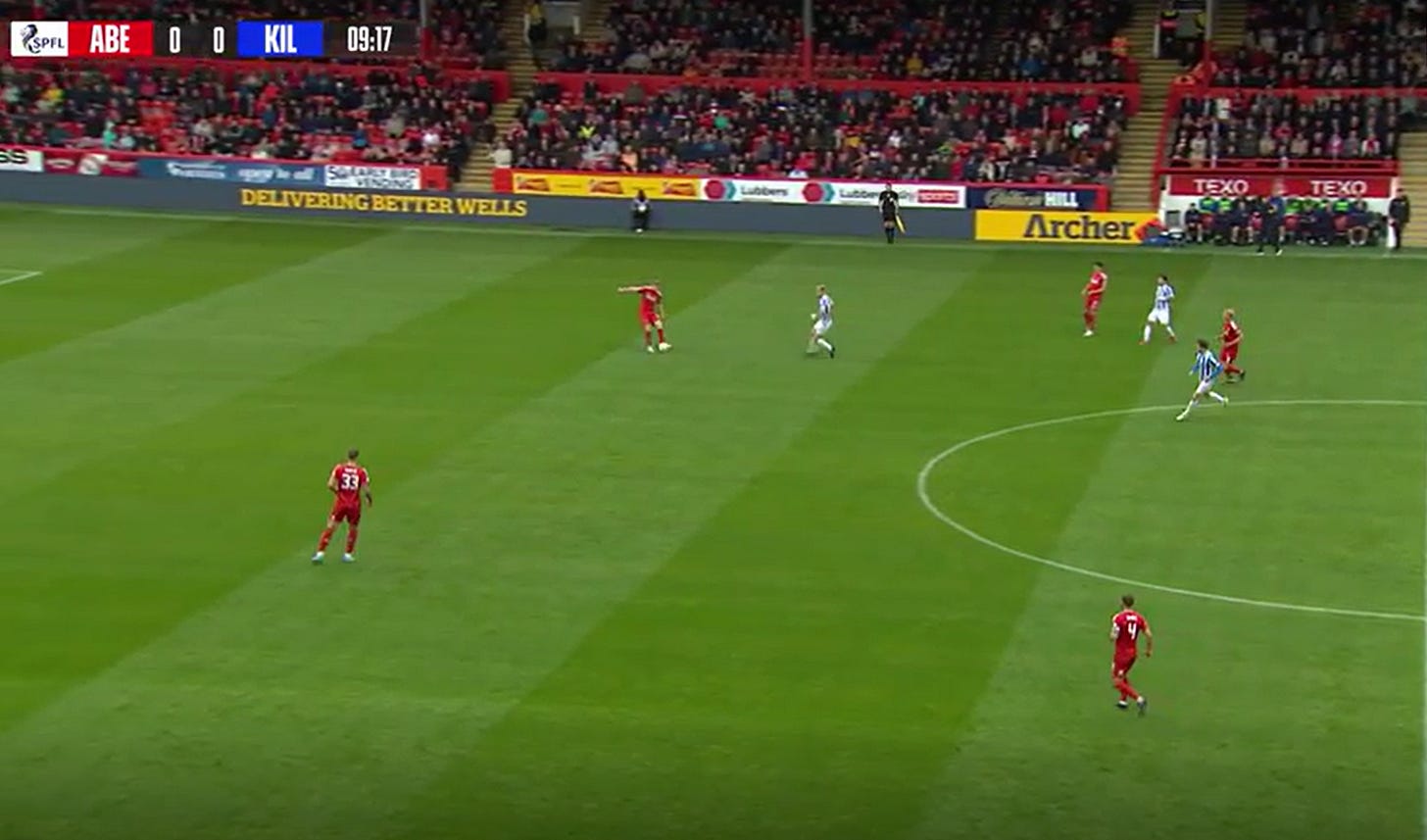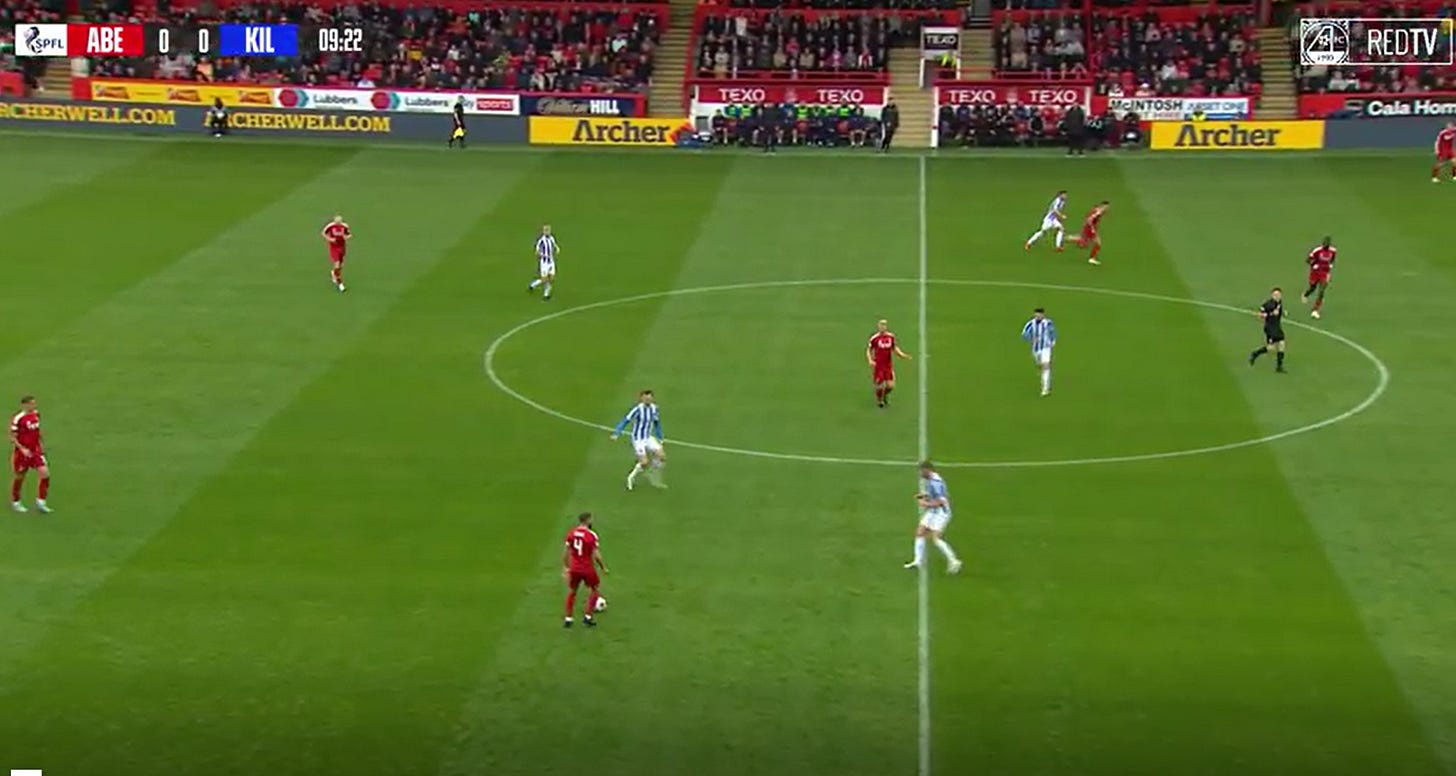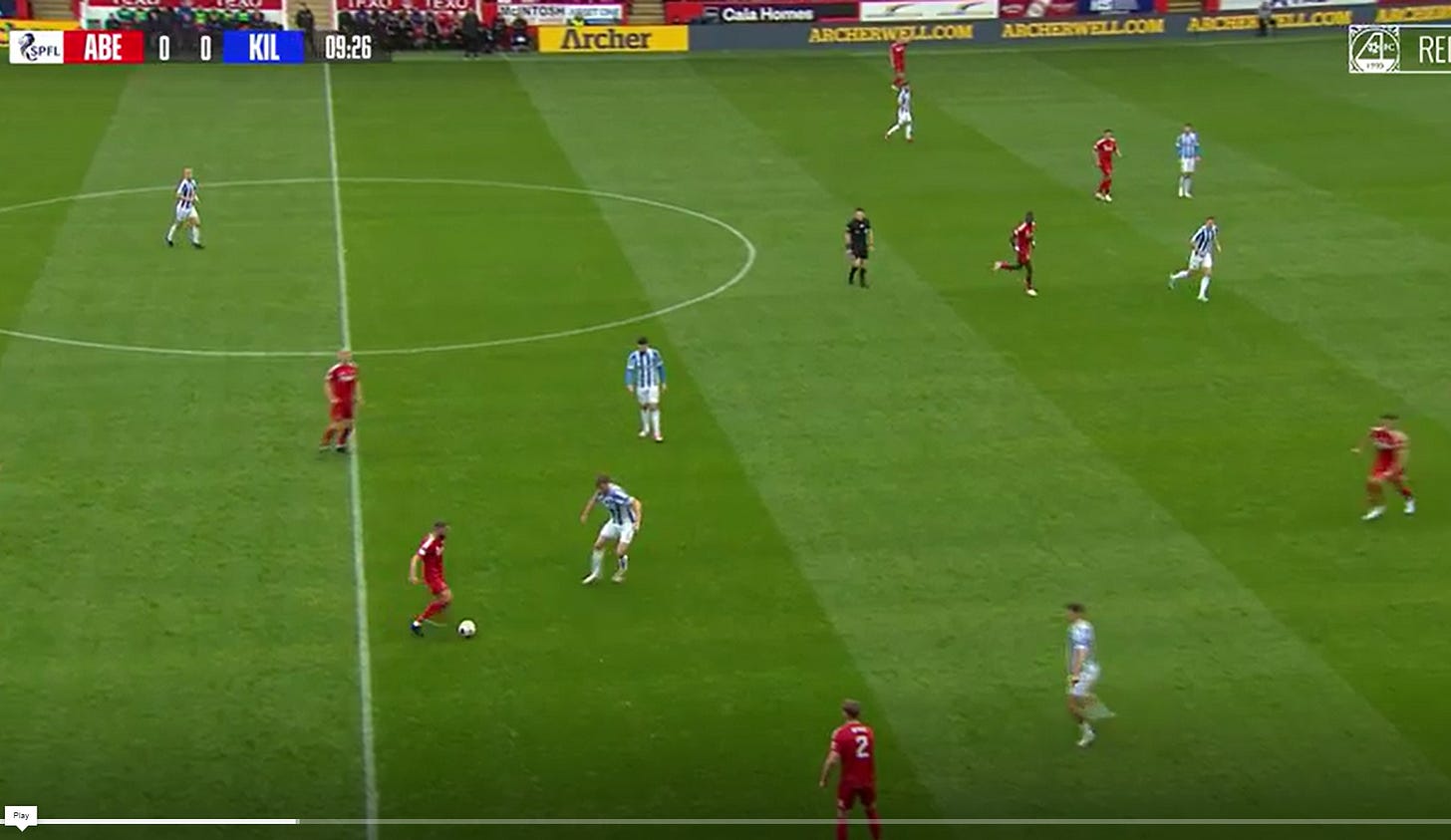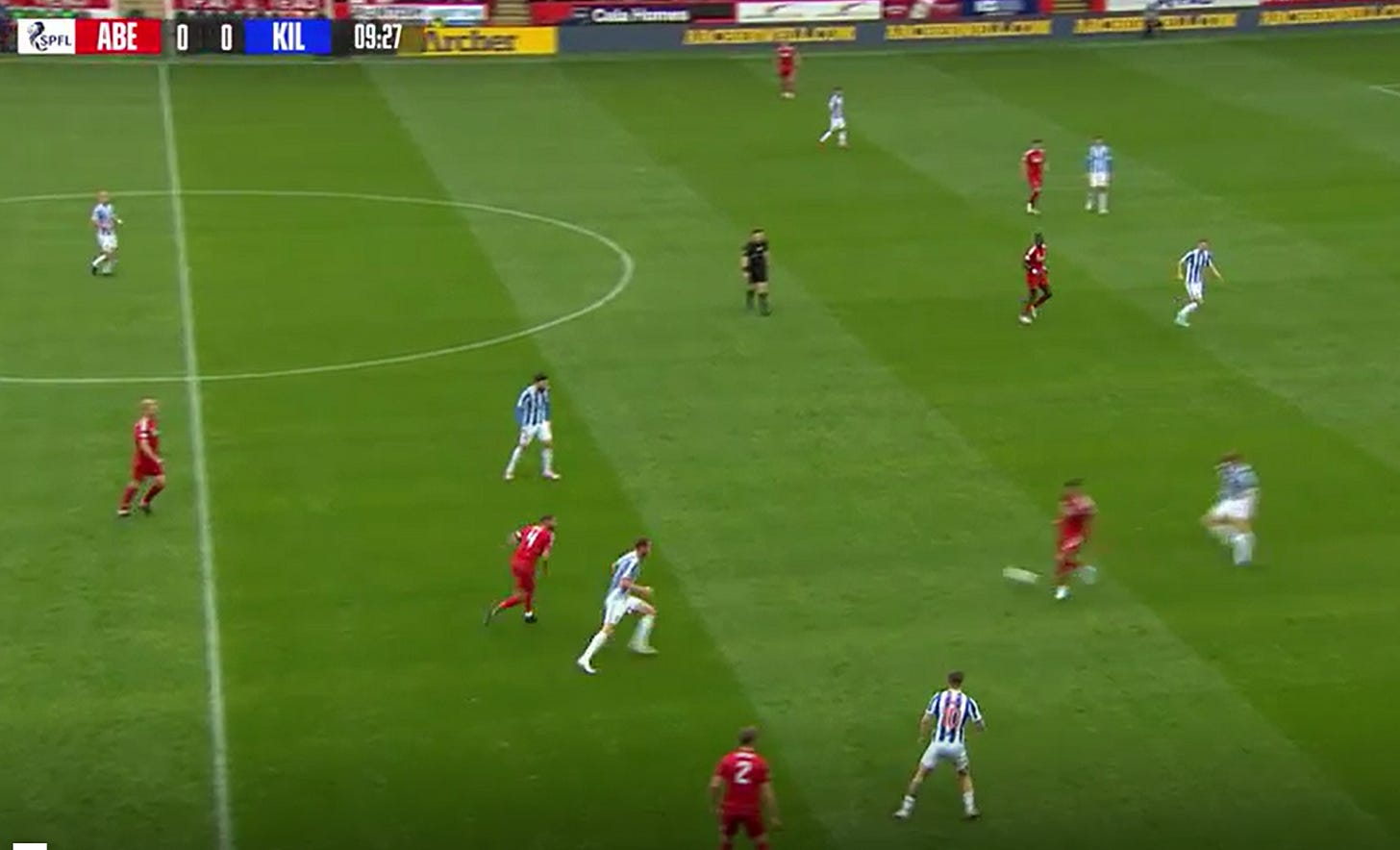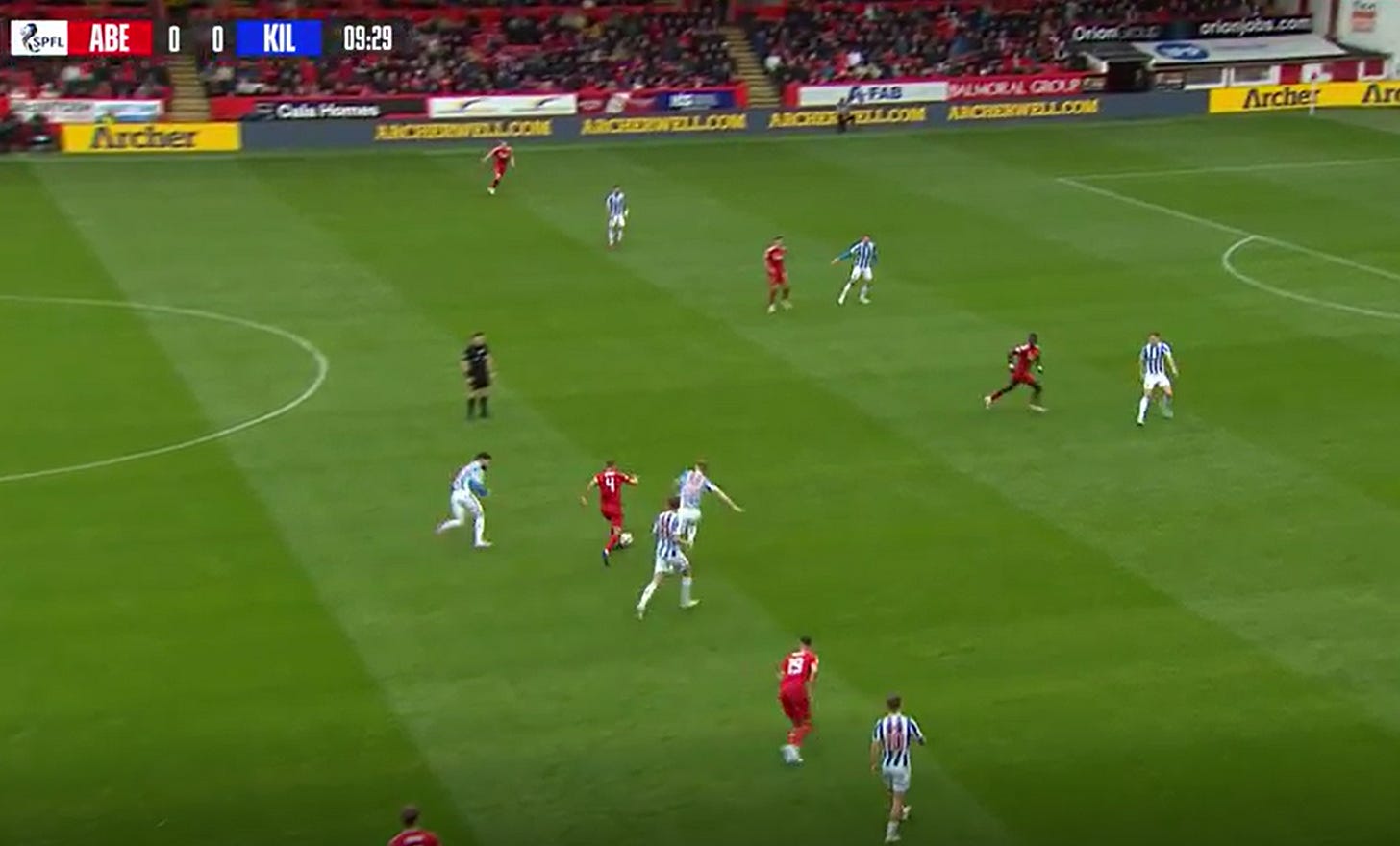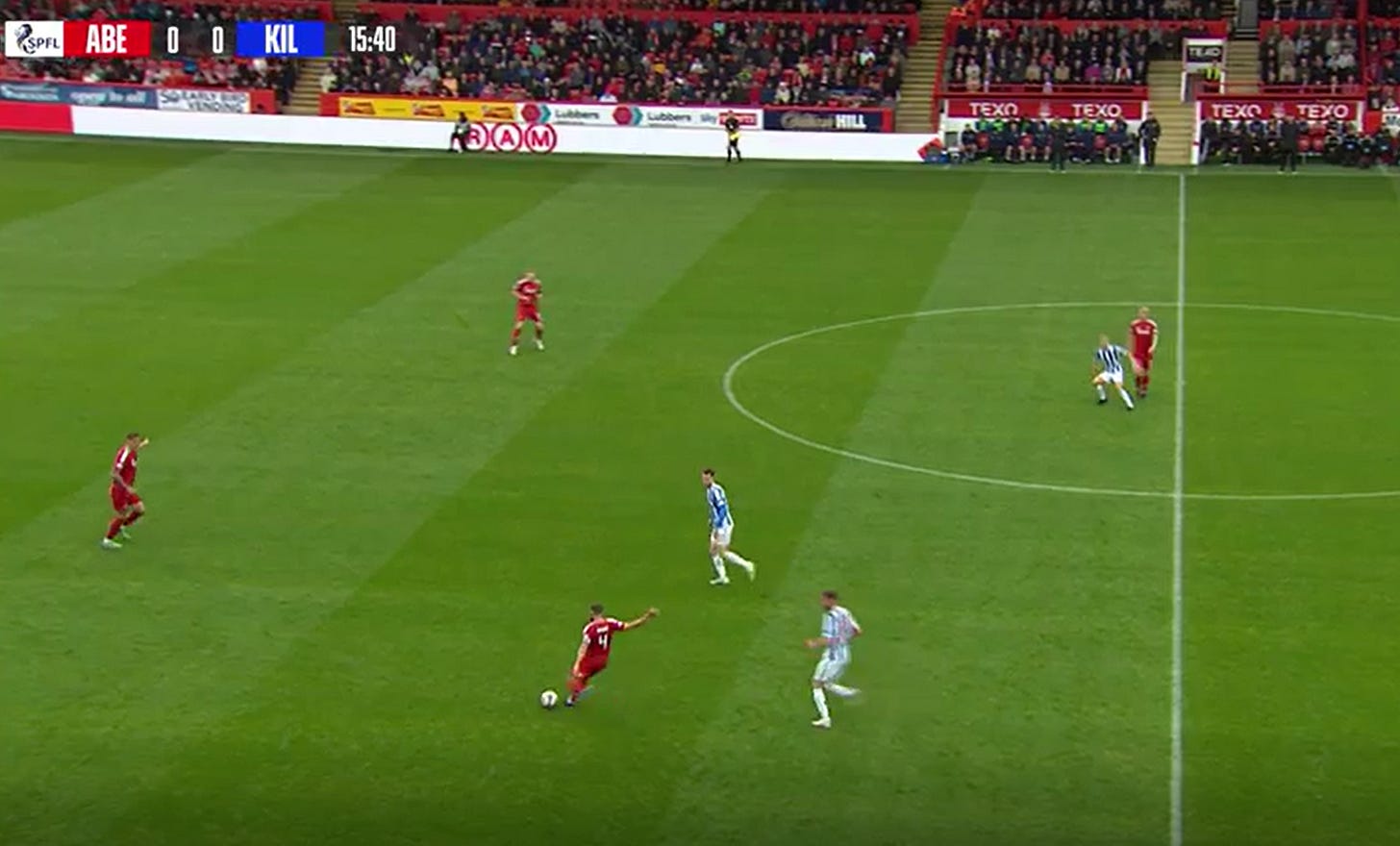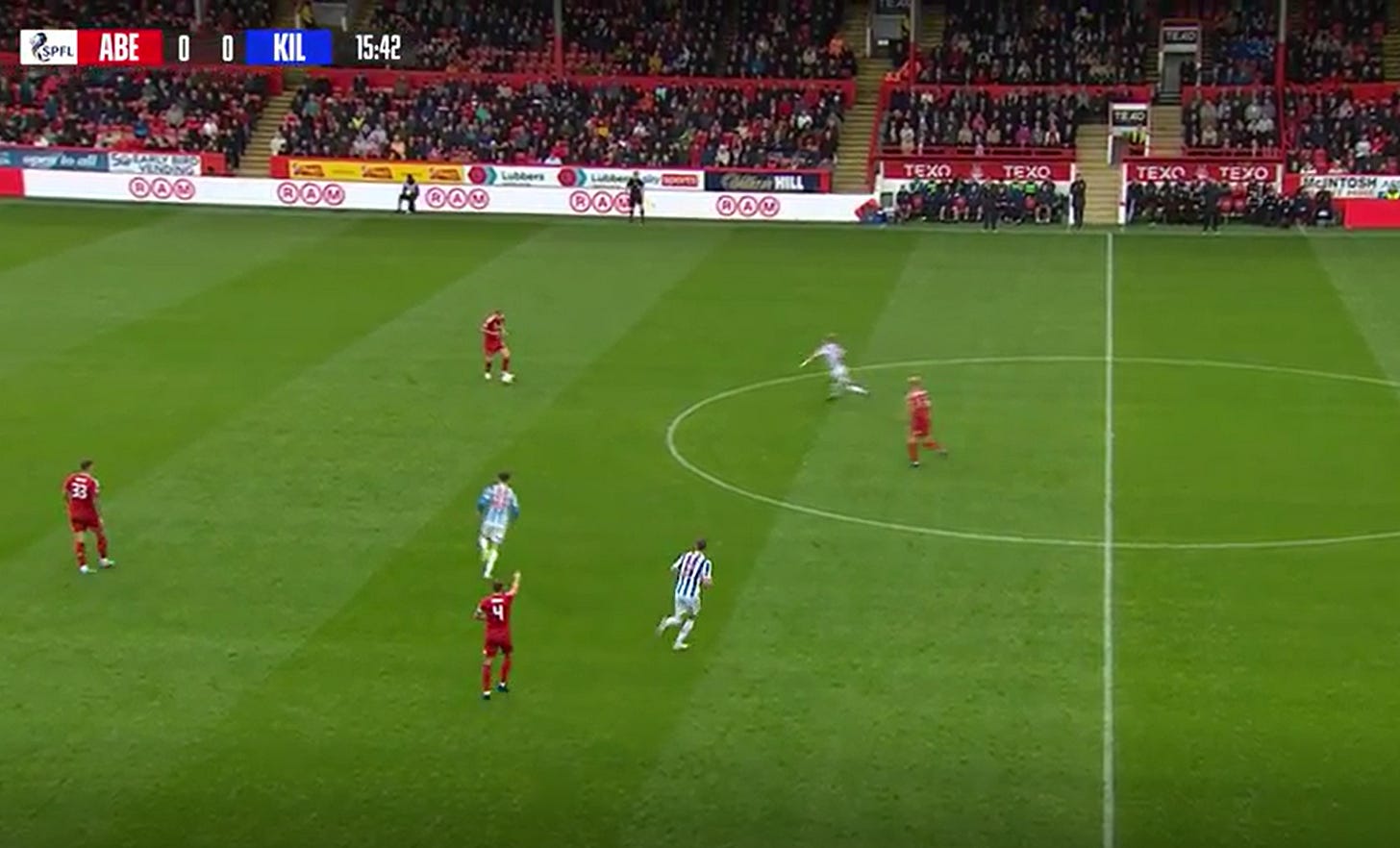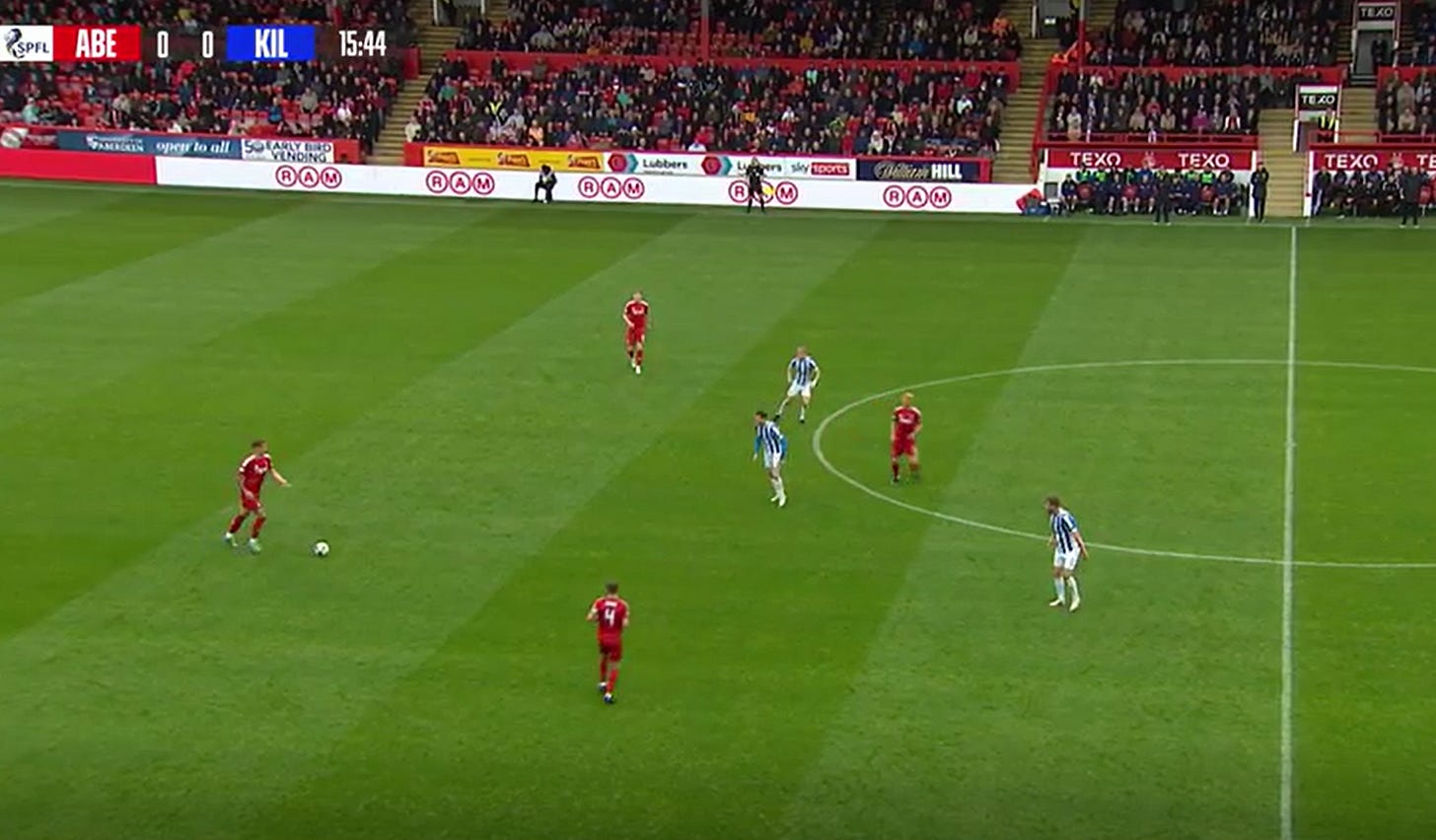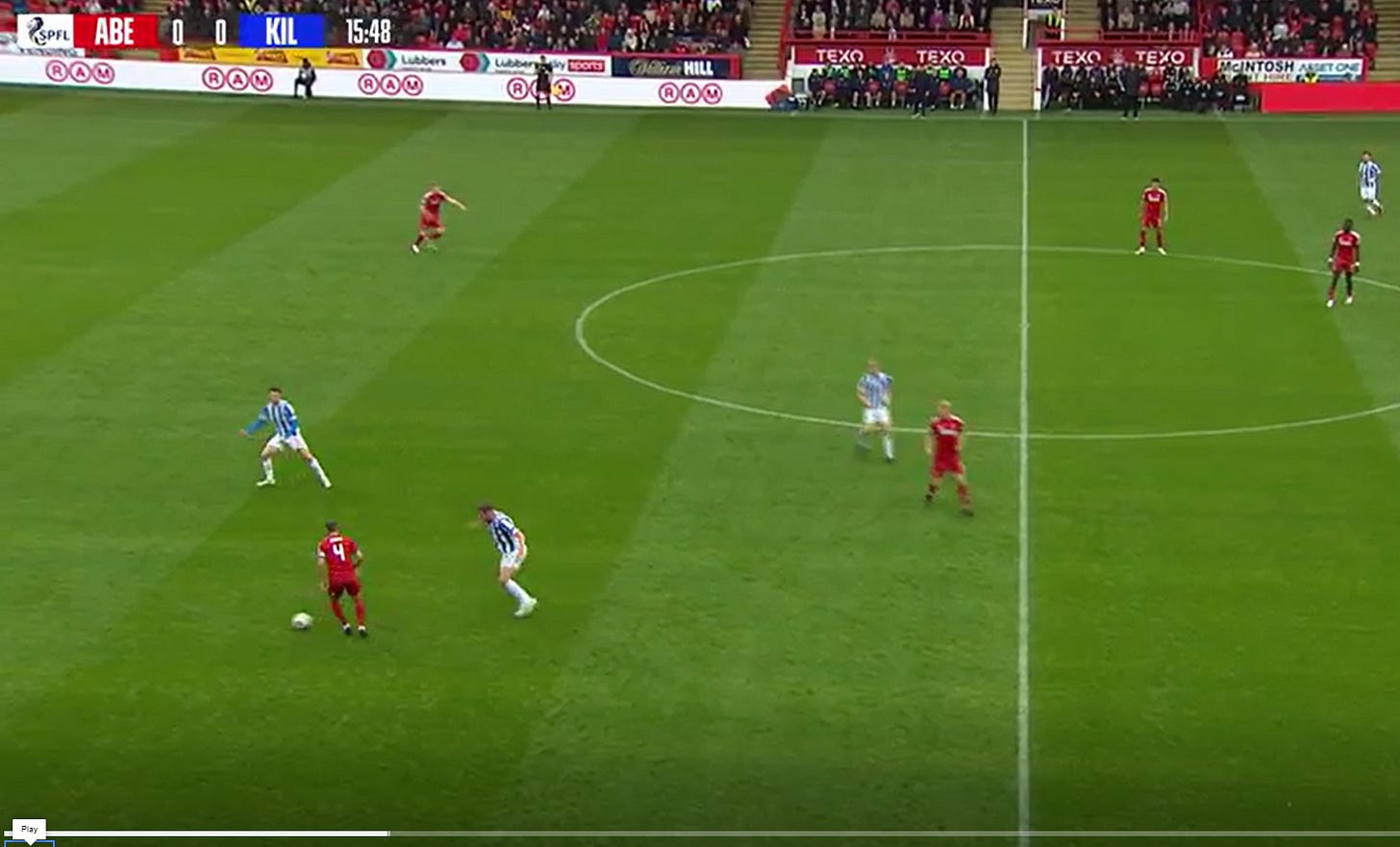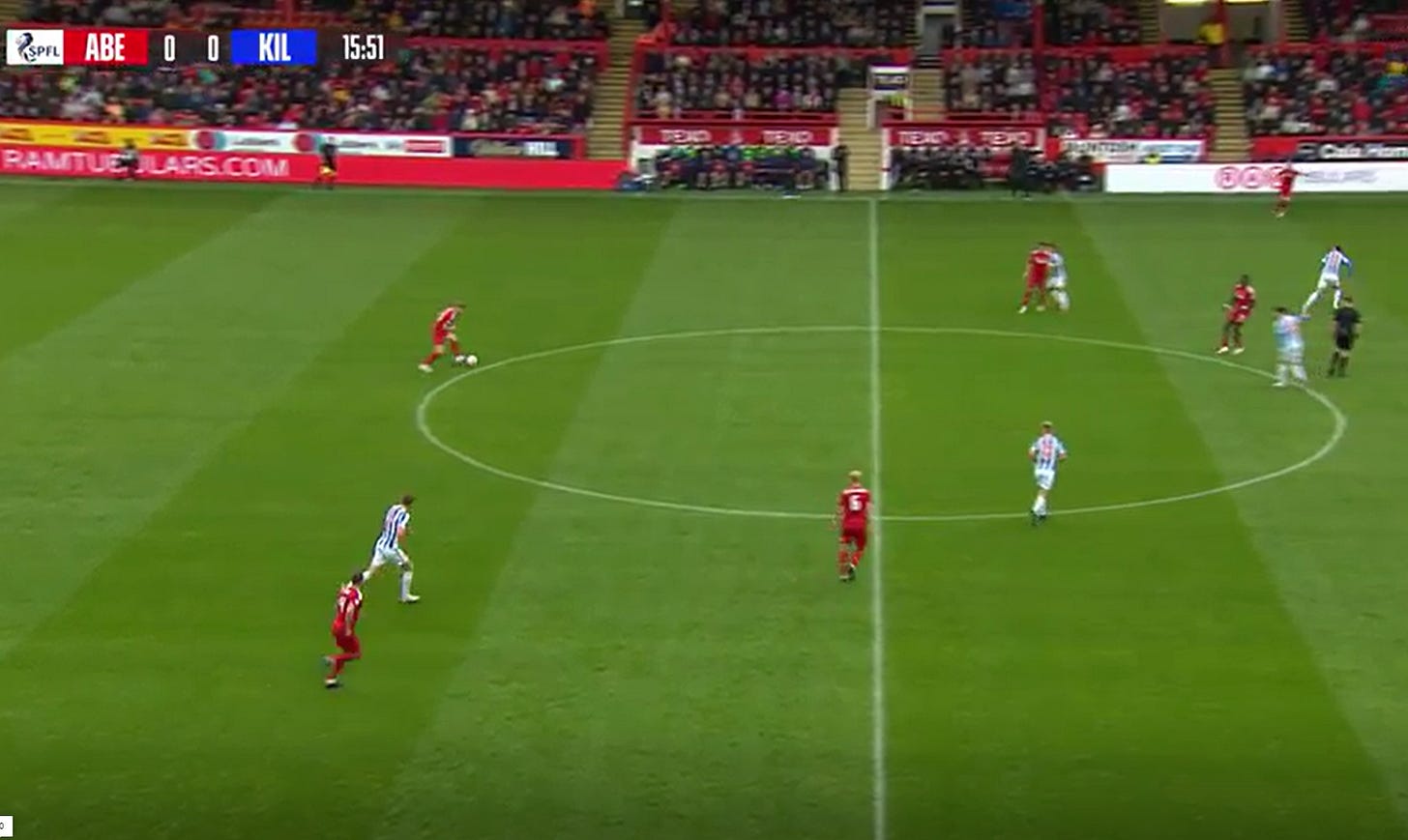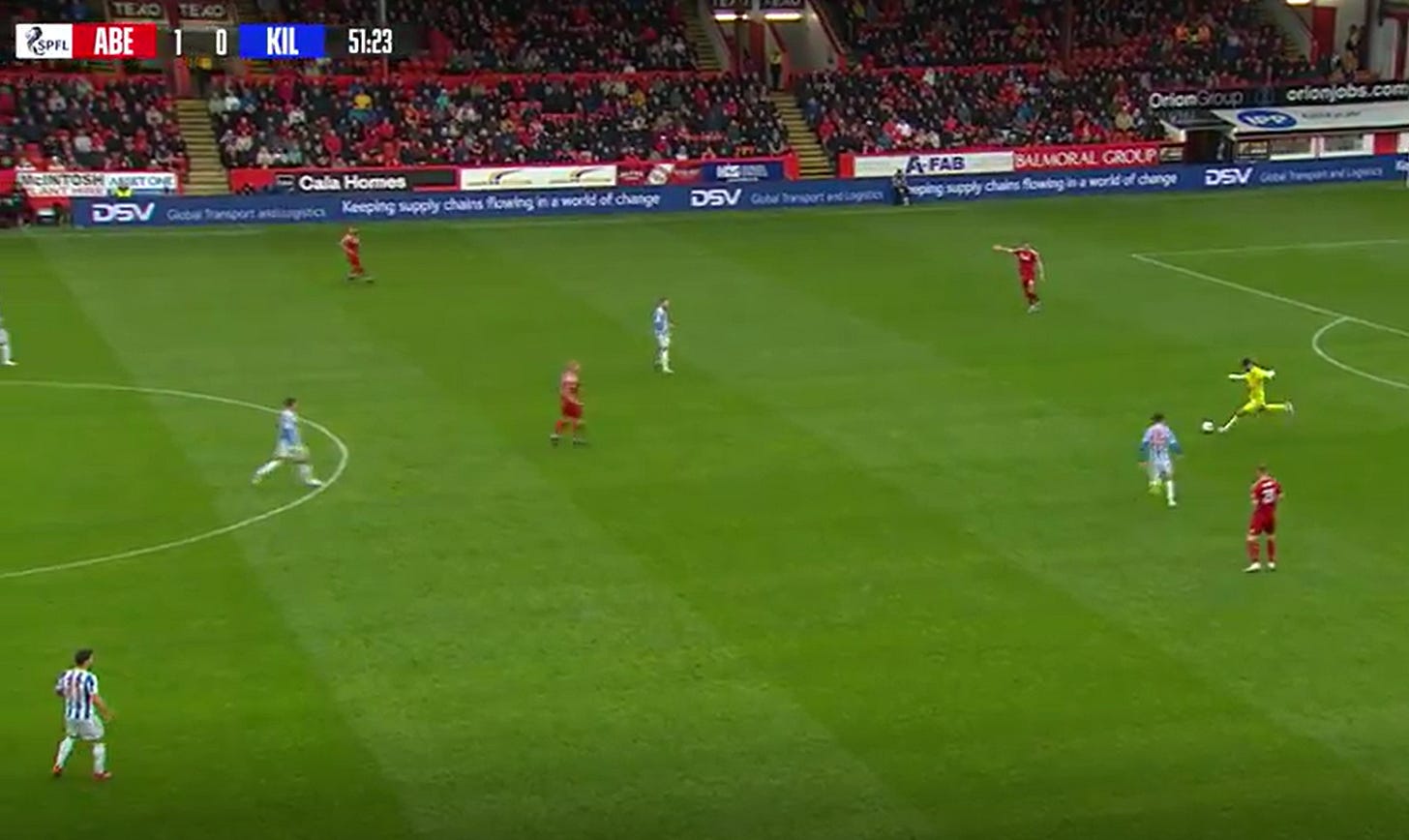Aberdeen made it eight wins out of eight against Kilmarnock on Sunday.
It was another impressive display from the Dons who were comfortable throughout, against the SPFL’s 4th best team last season. There are caveats: Killie had a grueling European match on Thursday and were reduced to ten men after only 54 minutes. But, aside from a couple of spells where they put balls into the box, it never really felt like Aberdeen were likely to concede.
What is Thelinball?
This is the big question I think we’re still asking ourselves. From analysis of Elfsborg there was a thesis that Thelin would bring a counter-attacking, high-pressing (and counter-pressing approach). He liked longer passes and would be comfortable giving up the ball.
We have seen examples of this so far with Aberdeen having less possession against St. Johnstone and St. Mirren in total, despite there being phases in both games where the Dons dominated the ball. Sunday, was not the case, and Aberdeen were comfortably ahead in the possession match up, prior to the sending off.
Last week I highlighted how Aberdeen had the opportunity to work on some of their build-up patterns against Queen’s Park. I looked at the role of Greame Shinnie dropping in to the right back position to pick up possession and build up play.
On Sunday, we saw some of this again. For the first half hour Aberdeen were happy to recycle possession via the centre-backs and goalkeeper and build-up gradually with more patience, primarily through Shinnie and Nilsen.
What, I think, we’re seeing so far, is the coaching team developing different solutions to break down defences. An understanding that they may need to take the initiative in certain fixtures. That teams, like Kilmarnock did and Queen’s Park before them, will come to Pittodrie and ask Aberdeen to break them down.
Let’s take a look at that first third of the game initially, and then see how Killie’s adjustments affected Aberdeen’s ability to play out.
Shinnie and Nielsen Pull the Strings, and the Killie Midfield
Derek McInnes noted that Kilmarnock struggled to get to grips with Aberdeen in his interview with Kilmarnock TV. McInnes said:
The first 25 minutes we were a wee bit in between. We tried to match up their shape, go with three in the middle of the pitch. We didn’t really, kinda get any pressure on them and I thought Aberdeen were enjoying the game too much.
Man-marking an opposition midfield that likes to have more of the ball is something we saw McInnes do at Aberdeen, particularly against Celtic, to varying degrees of success. The challenge it presents is intelligent, coordinated movement, can drag players out of position and open up opportunities to progress the ball forward. Additionally if the team is not organised on when to press, big gaps between the different units gaps will easily appear.
Starting Shape
Killie lined up in a 4-1-4-1 with Donnelly at the base of a midfield three, picking up Gueye, in theory. Burroughs and Watson were higher up, matching up against Shinnie and Nilsen. See the highlighted section and illustrated below from the opening seconds of the game.
Although Gueye is out of shot, Watson is tight on Shinnie and Burroughs with Nilsen. In this structure, with this movement, there are few options for Molloy (in possession) to progress the ball forward through the midfield.
Aberdeen were able to break this structure fairly easily. With only one striker (Watkins), Mitov, Rubezic and Molloy had a 3v1 at the back.
I’ve highlighted three examples below of how Shinnie and Nilsen’s awareness, positioning and quality allowed Aberdeen to break the Killie scheme and progress the ball into dangerous attacks.
Shinnie Long Switch to Gueye
Figure 1.1: Shinnie drops in to receive at top of the box
Prior to the image above, Mitov exchanged passes with Molloy which drew in Watson. Burroughs is either unable or unwilling to go with Shinnie who has dropped in deep to receive. The staggered positioning between he and Nilsen makes them harder to mark. Watson decides to get back in position and mark Nilsen, in which case Shinnie plays to Molloy
Figure 1.2 Shinnie plays to Molloy, Killie drop back, Nilsen drops in to receive
The Kilmarnock players drop back in behind the ball and Nilsen, always willing to take the ball in tight positions drops in to receive. Note he now has both Kilmarnock’s central midfielders in close proximity to him on the same defensive line.
Figure 1.3 Nilsen turns and plays to Shinnie
Burroughs is now out of position and makes an effort to get back on Shinnie who has moved up around 10 yards. The captain uses his opponents momentum to cut back inside and open the play up.
Figure 1.4 Nilsen turns and plays to Shinnie
Figure 1.5 Shinnie’s long pass finds Gueye who nods it down to Keskinen and Aberdeen have an opportunity to get in behind the Killie defence
In the end it amounted to nothing but it illustrates how quickly Aberdeen were able to turn possession at the top of their box into a dangerous attack. All Shinnie and Nilsen had to do was move up and down on the same vertical line.
Shinnie False Full Back - Wall Pass with Sokler
Figure 2.1 Molloy receives under pressure from Watson. Shinnie drops into right back slot
Aberdeen move the ball from the left side to the right. Watson goes to press but is on his own. Marley Watkins is too deep to apply pressure to Rubezic who is able to find Shinnie under limited pressure.
Figure 2.2 Shinnie receives the ball from Rubezic.
We can see from this image how disjointed the Kilmarnock midfield is. Nilsen is now being picked up Donnelly who ‘should’ be on Gueye. It’s a tight window however for Shinnie to play that pass into the Senegalese’s feet. Instead he goes Ester Sokler.
Figure 2.3 Sokler drops in to provide an option for a wall pass
Figure 2.4 Shinnie plays it forward and receives the ball back with space to run into
Donnelly’s decision to step in on Nilsen has created this hole for Shinnie to exploit but if he hadn’t Shinnie would have just played it to the Norwegian.
Shinnie drives into the space with a number of potential passing options in front of him and yes, that is Jack MacKenzie on the left wing (different topic for a different day).
Molloy Spare Man to Progress the Ball Forward
Figure 3.1 Shinnie receives the ball and plays to the feet of Molloy
As the ball is traveling towards the Irish centre-back. Watson goes to press. This leaves Nilsen free. It’s effectively a 4v3 rondo with Aberdeen players on the outside of a square and three Killie men trying to win it back.
On this occasion Molloy is not quite quick enough to play the ball into the Norwegian who, as we can see below, is in a great position to turn and play forward. Instead he plays to his defensive partner.
Figure 3.2 Molloy receives under pressure from Watson and plays to Rubezic.
Figure 3.3 Rubezic in possession but doesn’t have an easy pass to break pressure
The ball goes back to Ruby but Kilmarnock are making it difficult for him to break the lines.
Figure 3.4 Rubezic plays to Shinnie and then drops off
As the ball is played to Shinnie he is pressured. Watkins then moves to cut off the return pass to Rubezic. Watson is dragged over with Nilsen who is moving to receive ahead of the play. But take a look at Gavin Molloy.
Figure 3.5 Shinnie opens up and spreads the play to Molloy who now has space to progress the ball up the field.
Summary
As in all elements of football, the opposition’s strengths or weaknesses can impact the success or failure. Killie’s mind has been on European football and they may well have failed to prepare as well as they normally would have without the midweek game and trip. Their pressing was disorganised and disconnected. What’s not really shown in all this images is how deep they were defending, perhaps because they were concerned with Aberdeen’s pace in behind. This created problems on the transition as when the cleared the ball, they did not get up high enough to condense the space.
However, on the flip side, and looking at things with the Aberdeen-tinted specs and using the examples above we can see how Shinnie and Nilsen, with the aid of the two centre-backs and goalkeeper were able to create opportunities to progress the ball with smart movements and patient passing. It’s really interesting to see the push and pull of the two midfielders. When one drops, the other goes a little higher and vice versa, continually creating angles for passing and making it difficult for one man to cover them both.
Additionally, I have not even touched on the interesting movements that are going on ahead of the two holding midfielders. This undoubtedly also contributes to the space that Shinnie and Nilsen are able to exploit.
Did Killie Figure Aberdeen Out?
When Bruce Anderson came on after thirty minutes, Kilmarnock made it harder for Aberdeen to progress the ball as the two forwards gave the centre-backs less time to pick out a pass to the midfield pair.
Following this the Dons struggled to play through the midfield and Mitov seemed to become very risk averse. He decided to go long and gave possession away. McInnes’s comments that after he went with two forwards, Aberdeen seemed to rush things a bit more, have merit. See the example below where Mitov has quite a few options but instead decides to go long.
But the problem with putting on another striker is that it takes away a midfielder. Even in this situation above you can easily see a situation where Nilsen could receive from Mitov and then lay off to Molloy or Shinnie and Aberdeen would get forward with little hassle.
Unfortunately, from an analysis perspective at least, the red card for Brad Lyons changed things and we were not able to see how Thelin would have adapted things.
Are we expecting Aberdeen to build out from the back all the time?
I certainly don’t have any insight to the manager’s discussions nor am I an expert on his Elfsborg side, but I do think, as mentioned at the start of the article, there may well be an awareness that different approaches will be required for different games. Perhaps Thelin will experiment to find the right formula and go with that as he gets to know the league better. For sure, Killie will not be the last team to come to Pittodrie and play with one striker.
If Aberdeen do decide to be more direct we have already seen how coordinated a press they are developing in event they lose the ball. The pace they have added to the side, the aerial ability of our mate Big Pape and the two outstanding ball winners in Nilsen and Shinnie to pick up second balls means that they should be comfortable with this approach as well.
There will be bigger tests ahead. But long or short, it seems like Aberdeen are developing the ‘solutions’ to be successful.
Stay humble.


